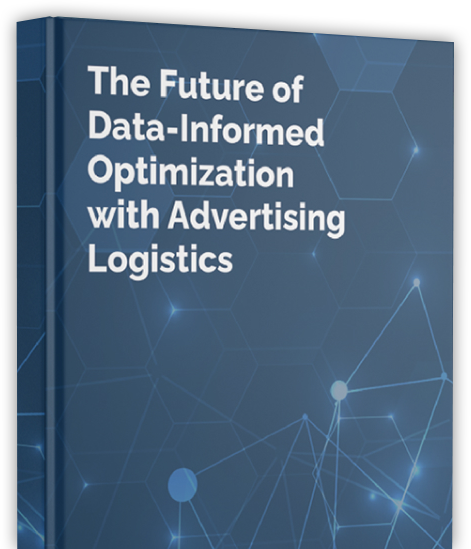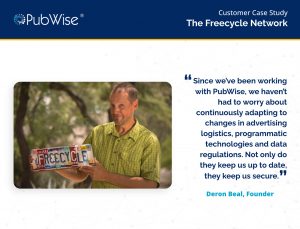Description
Why settle for satisfactory when optimal is within reach? In this episode, Stephen Johnston talks about the theory of satisficing, which is explained by cognitive heuristic, behavioral science, and neuropsychology, and the role it plays in the programmatic advertising ecosystem.
Stephen is fanatical about using technology to move beyond “good enough” by utilizing machine learning to adapt to the never-ending changes in business strategies, advertising logistics, programmatic technologies and data regulations.
Stephen offers a unique perspective, combining his degree in psychology with his passion for programming, to paint a picture of an advertising world that no longer settles for mediocrity.
Transcript
Tony Winders: Hello, again, we’re back with Stephen Johnston, Founder and CTO of PubWise. My name is Tony Winders and we’re here to put Stephen On the SPOT, again. Stephen, welcome back. Over the course of getting to know you, you’ve mentioned a term a few times called satisficing. And I know that it is really important to you and in the context of what you’re building at PubWise, what is satisficing? And why does it matter?
Stephen Johnston: A simple answer to the question is, it’s a combination of the word satisfy and suffice. It was created as an economic theory by a guy named Herbert Simon, and you’ve heard when people discuss physics, they’d say, this thing sliding on a perfect, smooth surface, or something happens in a vacuum, these kinds of things, ideal situations. And a lot of economic theory prior to his development of this theory, was based on these sorts of ideas that people had perfect information, that they knew everything that was going on in the world, that the foundation of people’s behavior and economics was based on good and complete information. And he introduced a concept called Bounded Rationality, which is essentially saying that there are limits to the inputs. You can be smart, you can be rational, you can be well informed, but without all the information, we have to think about this as a bounded reality, or a bounded rationality. So then he called that type of thing, instead of being optimized, satisficing. And it is essentially the first acceptable solution. A way that people do this, in their every day might be selling something, and they get used to good bids coming in and they accept the first bid that goes over their minimum, and that’s a form of satisficing. And it’s at least partly based on lack of information, not knowing that another bid is coming. And I’m always looking for mental models of how things apply to the world. I talk about the Gordian knot problems, it’s like, when you find these problems that have this seemingly intractable component, that’s where opportunity lies, is solving an element of that intractability. We’ve continued to use this concept of satisficing, and try to find places where that’s typically done in the advertising industry. And so the waterfall approach to advertising for publishers was a form of satisficing. And in its simplest form, as bids came in, the ad server would select the first one that crosses a threshold and serve it. And header bidding was one of the first things we used to cut that intractable problem and say, let’s do a fair auction, let’s get everybody involved at the same time. And the old method was, to talk about selling things, you sell a house, and what if you had to talk to each person selling your house, in a sequence? You could only say yes or no to the first person, and then yes or no to the second person and then yes or no to the third. What if the fifth person had the best offer? That’s the problem that header bidding solved. And we’ve continued to look for additional areas where AdOps teams, where the industry satisfices. We’re in this evolution of technology and capabilities from a programming perspective that can solve these problems. And this is where the theory of Bounded Rationality says, “A person has a limit to the information that they can collect and the information they can act on.” That’s where we bring computers in to solve those kinds of problems. And that is the area where machine learning is ideal. Use a person to rationalize how to optimize things, you know that if this leads to a higher result, it’s better. Can you do that 50,000 times an hour? No. That’s where we bring machine learning in and that’s where this combination of humans and machine learning lets us solve these problems that are typically satisficed in the advertising industry.
Tony Winders: When you first talked to me about satisficing, it was, “No more satisficing.” thinking about it as even a rallying cry for the company.
Stephen Johnston: It’s like if you see a no smoking label that says satisficing in the middle instead of smoking.
Tony Winders: And a red line through it. I think that makes a lot of sense. What have you learned as you’ve evolved beyond header bidding and into the development of this end-to-end, fully observable programmatic platform? What pockets have you found in AdOps or elsewhere that have been satisficing where you’ve been able to apply machine learning to a better way for optimizing on both ends of that spectrum?
Stephen Johnston: Between machine learning and automation, and service, like smart application of technology, there’s opportunities all through the stack, from buyer to seller, for things that are currently managed manually in some capacity. And I look at every instance where a person says, “I’m going to do something for a few days and then in the end, I’m going to see if this number gets bigger or smaller, then I’m going to keep doing it if it’s bigger and stop doing it if it’s smaller.” All of those can be optimized by what we’re working on. And there are hundreds of them. Our first application in our SPOT technology was around bidder selection and basically partner selection in the header bidding auction, there’s maybe a couple hundred who could be in any given page view. And the recommendation out there is, pick seven, and that accretes to the largest SSPs, who’s the seven you’re most likely to pick? But the reality is, those aren’t the same in every geography, they’re not the same on every device, they’re not the same at every time of day. There’s budgets, if the budget of a bidder peters out in the first 20 minutes because of their volume, shouldn’t you switch? Those are the things that we can discover and we can activate, and act on with machine learning. What human team is going to be doing sub-hour optimizations on a regular basis across 100 bidders? Maybe there’s a team out there doing that. We can bring that down to long tail publishers, and that sort of capability. So we’re looking all along, it’s the same thing on the open RTB side about fraud, bid volume, who’s buying what, those behaviors exist in the open RTB platform, they exist all the way out to the DSP. And the difference is active management of those interconnections versus a report respond cycle that may take weeks or days.
Tony Winders: How does that work? Do you train the technology to make the optimization? Or does it flag it for you and then you have to make a decision as a human being? How does that work?
Stephen Johnston: It comes down to maturity. Your kid learns to swim, you don’t take them to the pool and throw them in the deep end and walk away, right? You watch them for a little while. We’re doing the same thing with machines. Report on it first, let the machine make a recommendation first, and then maybe you make a manual one, then once you’ve realized that its recommendations are high quality, they’re returning results, now we get into automation. It’s a mix, because you’ve got to evaluate it. Automation is a cost in terms of development, and you want to make sure you’re automating the things that are high value. So the first thing is recommendations. Then, the highest value of those recommendations get automated so that they can be done more fully. We could graph out this whole capability and maturity line that you see in every industry, but you have to walk before you run. And so you take the same approach to algorithms.
Tony Winders: When did you first become aware of satisficing? I’m just wondering if you’ve experienced it in the culture or if there’s an opportunity for PubWise to own that in programmatic advertising.
Stephen Johnston: I’m pretty sure the guy who came up with it won a Nobel Prize, it’s out there. Not that every Nobel Prize winning economic theory is known.
Tony Winders: Or just because I haven’t heard about it doesn’t mean it’s not out there.
Stephen Johnston: Everybody knows game theory, game theory became popularized by some technical implementations. I do think it’s something that, like mental models, there’s an opportunity to popularize it. I think it very clearly describes the type of problem we’re working on solving, which is, some economic theories work when you act like it’s perfect information, because it’s so complex, it’s hard to describe otherwise. Like, everything would be, “Well, before I can explain that to you, I need to explain this, and before I can explain this, I need to explain that.” So they washed some of that out so they can just talk about things in general. When we want to make real changes, we want to really activate something, you have to get into the nitty gritty. And that’s where the theory is, it’s about what are really the limits of capabilities in economics, and it at least gives us some theories, some words to use, some concepts to use to describe trying to expand beyond the confines of bounded rationality. My background is in psychology, and my undergrad was psychology before I really got into programming. I’ve got enough experience reading research papers and the rest to know that there’s often an academic description for something you’re seeing popping up in the real world. If it’s something you’re seeing and you’re like, “Why do these people keep making these suboptimal decisions?” Someone’s likely described that. So what is the body of, you either find it in in organizational psychology, or you find it in economic theory. So, I just went out searching, and I came across this thing, and it said, “That describes what we’re describing.” So, it’s a useful thing to think about, it’s a useful thing to read about. Because they’ll have words and phrases and concepts and approaches to it. I compare it to acid theory and databases as a way to describe the things that affect how a database can work. And it’s, you know, atomicity, consistency, integrity.
Tony Winders: Satisficing seems like a recipe for mediocrity, it’s almost like it’s intended to be time saving and cost saving. It feels like it has a pragmatic intention. But what I’m hearing you say is, “Screw that,” satisficing isn’t acceptable. Maybe it has a place, but we want to go beyond it.
Stephen Johnston: That’s the way we’re looking at it is, I want to extinguish that behavior as far as we can. And, I do feel aggressively repulsed by it. I’ve got this sort of pit of the stomach, that’s BS. I think we make this super real. Almost every publisher that we talk to says, “Yeah, we deploy this stuff, and we deploy a US version and a Europe version.” And you hear that all the time, “We’re going to have a Europe approach, or a non-US approach and a US approach.” And then they say, “Well, is Canada included in the US, what about Mexico?” I mean, are we really talking about North America? Are we talking about the Western Hemisphere? Then they say, “Well, how many can we really manage?” So then they say, “Well, three.” Okay, so we’re talking North America, Europe, and then everything else? And then “Okay, how long is it going to take to figure out what those versions are?” Give us a couple of weeks. There’s 200 countries, there’s three mobile devices, 24 hours in a day, there’s 100 bidders. We can optimize every single one of those combinations and more. But only if you decide to stop satisficing. Only if you decide to adopt the technology.
Tony Winders: Well, you’ve convinced me to stop sacrificing for what that’s worth. And just to recap, satisficing is a decision making process that strives for the adequate, rather than perfect results. It was coined by the Nobel laureate Herbert Simon in 1956. And I’ve really appreciated you teaching me about it and your perspective on not satisficing. So I’m going to bang that drum with you. And we’ll leave it there for today unless you have any parting shots that you’d like to say about the term. We’ve been talking to Stephen Johnston, the CTO and Founder of PubWise, I appreciate you letting us put you On the SPOT one more time, Stephen. Thank you.





